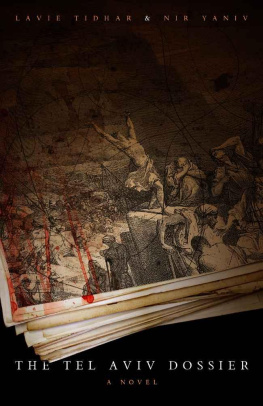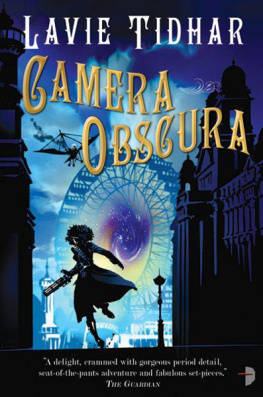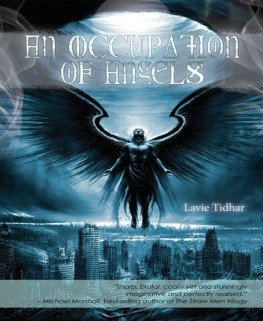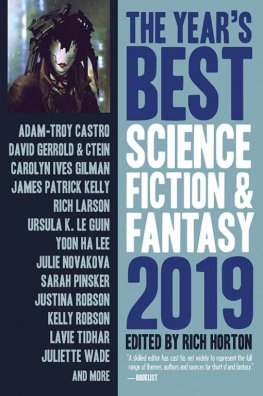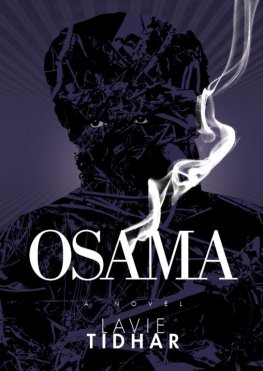HebrewPunk
By Lavie Tidhar
With an Introduction by Laura Anne Gilman
APEX PUBLICATIONS
Apex Publications, LLC
PO Box 24323
Lexington , KY40524
HebrewPunk
Lavie Tidhar
ISBN TPB: 978-0-9788676-4-5
Horror, Dark Fantasy
This collection is a work of fiction. All the characters and events portrayed in this book are either fictitious or are used fictitiously.
HebrewPunk
Copyright 2007 by Lavie Tidhar
Introduction 2007 by Laura Anne Gilman
Cover art 2007 by Melissa Gay
All rights reserved
Printed in the United States of America
www.apexbookcompany.com
An Introduction: Why You Should Read This Collection and Then Read It Again
HebrewPunk . Right. Catchy title. What the hell does it mean?
Hebrew : Seems like it should be pretty self-explanatory, right? A member of the Semitic peoples inhabiting ancient Palestine and claiming descent from Abraham, Isaac, and Jacob; an Israelite. Or, a Semitic language of the ancient Hebrews, retained as the scholarly and liturgical language of Jews, now the national language of Israel.
Punk : the first reference most of us will think of is a style or movement characterized by the defiance of social norms of behavior, usually associated with punk rock musicians and fans, as adapted to cyberpunk, within the SF/F genre. But it also means any prepared substance, usually in stick form, that will smolder and can be used to light fireworks, fuses, etc. It has also been used as slang for a young or budding criminal.
So. HebrewPunk. A person or language in defiance of the norm, a fuse waiting to be lit. A dangerous tradition.
I first heard the name Lavie Tidhar from another writer, in passing. This kid, that writer said, in the tone writers have sometimes, when theyve been annoyed by someone coming up with a story idea first, or getting the idea at the same time and telling it better. This kid, hes going to be good.
So okay, I said. Ill take a look. It took a while before I found the time, but eventually a story found its way onto my desk.
The writing in that earlier work was a little raw, the themes not quite as well-integrated into the story as one might wish, but the power of the visuals, the depth of voice, was already there, and I marked the name as one to keep an eye on. Not just because he was a good writer, but because he was doing things with Jewish myth and religion that reminded me of a writer I had long lovedIsaac Bashevis Singerif Singer had been raised on a steady diet of Hammer films and 21st century politics.
So when I was asked to write the introduction to this volume, I paused long enough only to check my calendar before saying yes. Stories of Tzaddik, the Rat, the Rabbi Lavie is mining ancient traditions and recent history to write stories of modern despair and a weird sort of redemptive compassion, messing with our expectations and always, always, leading with our humanity, even when the heroes are, by some standards, monsters.
Tradition, yes. The works in this volume are infused with centuries of tradition: traditions of the past, of the present the reader brings, and the future that is both dreamed of and dreaded. These stories require you to be aware, to think, to question. And that, too, is the Hebrew tradition.
Dangerous? Yes. Because these are not stories that you can take in passively. You have to read them, experience them, be changed by them. Change is dangerous. Is that good or bad? Only the nature of the change can tell us that.
One thing that I can tell you. This kid? Hes already good.
Laura Anne Gilman
April 26th, 2007
Table of Contents
The Heist
Transylvania Mission
Uganda
The Dope Fiend
The Heist
Breach
The bank stands alone at the citys heart. Circular and tall, its face to the world is of unbroken, smooth steel, a faade that hides and protects its heart. Whatever windows there may be are hidden.
Along its vertical wall a shadow moves. Where no living creature could go it crawls, a piece of darkness and moonlight almost indistinguishable from its surroundings.
It moves along. Its body is encased in a darkness that is more than clothes; its hands cling to the wall by uncertain means. It climbs the tower like a spider, scuttling in a silence that is more than the absence of noise.
The towers immune system has not so far detected the intruder. If it had, hidden machines would open fire, for every five lead bullets two of silver, for every four bullets one tipped with gold. If it had, if the motion sensors and the heat sensors, the dust sensors and the X-ray censors, radar and cameras and other, more arcane means, have not temporarily failed, the intruder would be captured and brought inside to the intimate womb of the tower, from which it would never return.
The intruder moves, uninterrupted, until it reaches the upper levels of the tower. Here there are hidden windows, a loose array of armoured, one way mirrors.
The intruder feels along the sides of one, running its hands along the perimeter of the small window. Any impact with the glass, any cut made to the layers of glass and wiring, will cause an immediate reaction. It jerks away its hand in seeming pain: there are tiny crucifixes cut into the glass, every five centimetres. The intruder scuttles up and down the side of the wall until it finds a window that it is apparently satisfied with. Feeling along the bottom of the windows, it detects the tiniest motion of air. There is a gap in the tower, a breach on a micronic scale.
In seconds, the intruder is gone. A cloud of vapour hangs in the air for a short while yet, the ghost of the dark mist that edges its way into the tower.
Inside, the cloud quickly reassembles. It reveals its shape first, then solidifies further, now that it is in the building. The intruders clothes are matt black, sealing the body inside it.
The intruder removes its headgear, revealing the face of a woman. She glides along the walls and down a corridor, looking around her cautiously. Her movements are precise.
There are no sounds. Her steps become more confident as she walks further into the heart of the tower.
Then, without warning, dark shapes slide out of the ceiling.
They look like bulbous plants at first, little metal balls that noiselessly grow a circle of tiny pipes around themselves, like the offshoots of a flower.
They sprinkle out water in a fine mist that gently descends to the floor. The intruder does not even notice until the water is nearly on her naked face.
Then she screams.
In the dim light of the corridor her face is a mask of writhing shadows. Where the water touches it, the skin blisters and frays.
Only the eyes remain for a while longer as the face around them is rapidly consumed, staring with an unnatural fear at the floating mist. Then they, too, are consumed in a bright flare and her whole head explodes, spraying the walls with brain and blood that are dry, and that form little mounds of mud on the floor. The intruders body slowly topples over.
In time it, too, is consumed by the mist.
Interlude
Somewhere, a phone rings. A large, hairy hand picks up the receiver. A Chopin concerto is playing loudly in the background.
Yes? The speaker is sitting in an armchair, looking out of a large window on the city that sprawls underneath. It is early morning, and the sun is already burning.
We failed.
So I gather. Theres a newspaper spread on the mans knees.
Last night, he says, his dry voice echoing down the line, a burglar attempted to gain entry to the blood banks premises. The intruder was apprehended by bank security and killed while violently trying to resist arrest. He pauses. But we know what really happened, dont we?
The voice on the other side of the phone sounds tired. They tell you at the bottom of the article, he says. I think. A friendly little warning from the authorities.
Next page


